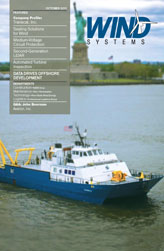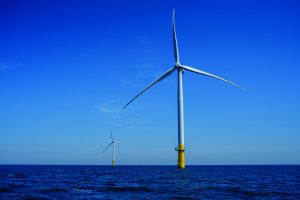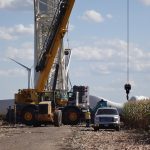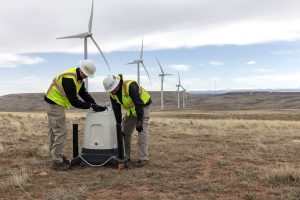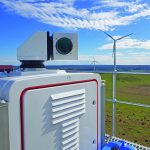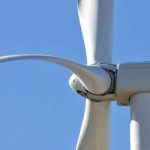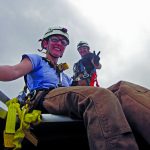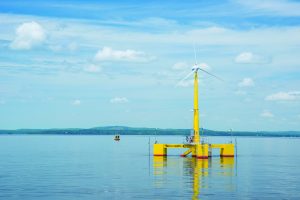Blade icing is a unique safety challenge on wind farms that occurs on both existing and new facilities still under construction. Understanding and preparing for the risks will not only get your employees home safely, but also put procedures in place that maximize productivity during an icing event.
Icing typically occurs when the ambient temperature is just a few degrees below freezing, where it is just cold enough for the precipitation or even fog to freeze as it comes in contact with the wind turbine. As the moisture freezes it starts to form a thickening layer, especially over the leading edge of the blades while the turbine is in use. When enough ice builds up the blade may quickly “shed” the thin ice layer. This shedding is usually spurred on when the temperature warms to just above the freezing mark. It is not uncommon for the ice chunks to weigh anywhere from several ounces to more than 20 pounds. When you factor in that the blade tips may be traveling close to 150mph and are located several hundred feet in the air, you can get a feel for the potentially lethal projectile that has a radius of almost 1,000 feet. Normally the damage is confined to a relatively small radius stemming from the base of the turbine. Witnessed firsthand it can be a sobering reminder of the power of gravity. Crushed turbine steps, seriously damaged transformers and junction boxes, and even severe damage to the nacelle fiberglass illustrate the destructive power of falling ice.
First and foremost, anyone approaching a wind turbine under conditions where icing may form needs to know how to identify and then properly approach a turbine to protect themselves from shedding ice. While most wind farm operators understand the dangers, contractors and the general public may not realize the potential risks since they are not exposed to them on a regular basis.
There are many warning signs that indicate potential icing conditions may exist. The most obvious, however, is to simply pay attention to your surroundings. If snow and ice are clinging to buildings, trees, and vehicles it is a good indication that the blades are also accumulating them as well. If approaching a turbine for the first time, start by staying a safe distance away, typically 1000 feet, and use a pair of binoculars to look the blades and the nacelle over very carefully for ice. Ice is extremely hard to spot with the naked eye at longer distances; however one trick is to pay attention to inconsistencies on the blades, especially along the leading edge, and look for small icicles clinging along the bottom of the nacelle or radiator area. If you do spot ice or even potential ice, do not hesitate to shut down the turbine if you must approach it. Even after the tower is shut down a smaller radius of 300 feet is typically required while investigating for potential ice. This is to compensate for any wind drift that may carry the ice away from the tower as it falls.
Staff already in the tower may not be acutely aware of weather changes that may have occurred outside. If changing weather is expected to be a concern, procedures should be in place to notify employees without having them exit the turbine to visually check for ice. The use of a prearranged spotter and radios is usually the cleanest way to spot any potential threats.
Once the turbine is taken off line and ice is found, work with the site safety lead to determine a proper way to approach the turbine base. As with any safety issue, identifying it is only half the solution. Using common sense and following a pre-approved safety plan will ensure that everyone remains safe.
Examples of items that may be included in a comprehensive safety plan could include procedures for remotely yawing the nacelle so that the rotor either faces away from approaching workers or away from expensive and critical equipment, such as ground transformers or junction boxes, if the turbines are offline and shedding large amounts of ice.
Shedding ice isn’t the only safety issue that may occur during an icing incident. A plan should be in place in dealing with stationary ice or snow that may accumulate on top of the nacelle. Even with the appropriate safety equipment, 150 feet in the air is not the place to try and walk on a slick surface. We all need to look out for, and educate each other, on the very unique risks that are inherent to the wind farm construction that we perform.
















